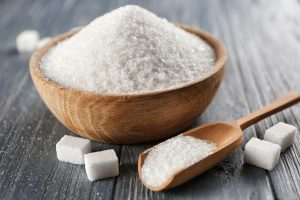The clothes you wear are more than just a product. To one extent, they represent who you are as a person. Your favorite shirt, your most comfortable jacket, the pants that give you confidence; all of these are expressions of yourself.
But clothing is also a representation of society. The cut of the clothes and the current trends paint a picture of what humanity is going through. Following this logic, you can assume the shape of society’s future by looking at fashion.
The following alternative clothing materials are changing the way designers think about clothing. And they might just paint a bright future for you.
The Future is Orange
Recycled materials are the next big thing in fashion. One of the most unusual ways designers are making clothes from trash is by turning fruit into fabrics. This is what Milanese fashion student Adriana Santanocito aimed to do in 2013.
According to her research, Italy produced 700,000 tons of orange waste every year. All these used oranges are created by the juice industry, which has no further use for the peels. ; She came up with a process to recycle the peels into silken fabric she calls Orange Fiber.
Santanocito’s revolutionary product would greatly reduce the enormous waste produced by the fashion industry. Her product caught the eye of renowned Italian house, Salvatore Ferragamo. Together, the fashion student and the designer are working hard to put sustainable clothing at the forefront of high fashion.
The Future is Plastic
Plastic is present in so many forms, in so many different types of clothing. It’s present in the polyester of most t-shirts and woven in the ropes of parachute cord on your sports gear. Plastic really isn’t a substance you would generally associate with a sustainable future, but recycled plastic is.
Many major clothing brands, such as Adidas and H&M, are using recycled plastics to manufacture their clothing. Specifically, they are incorporating plastic water bottles, which end up in trash bins and landfills by the millions. To turn these bottles into clothing, companies must chip them, melt them, and spin them into plastic yarn. This yarn can become comfortable parkas and jackets without using more chemicals.
The Future is Cruelty-Free

Silk is one of the most beautiful fabrics, with its glossy sheen and rich colors. The main problem with real silk is that harvesting it involves boiling silkworms alive inside their cocoons. Although it yields such wonderful material, this collection process can be construed as too brutal and cruel for a lot of people.
Enter Ahimsa silk, which is silk collected without killing any silkworms. Ahimsa silk was first produced in India and is named after the religious concept of non-violence. The only difference between Ahimsa silk and regular silk is that Ahimsa silk harvesters wait until the silkworm burrows out of its cocoon as a moth. They then collect the discarded cocoons without harming the worms. This process is more expensive, and each cocoon yields less silk due to natural deterioration. However, it ensures that your clothing is free from any cruelty to innocent worms.
If clothing is an expression of human society, these materials show that your future is in good hands. The focus on recycled and cruelty-free materials is indicative of a bright future not just for fashion but for the world.



















